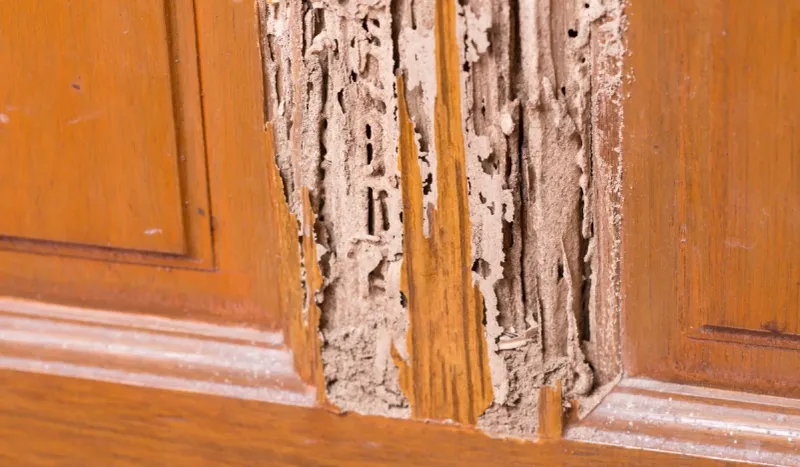Purchasing a new home is a significant milestone. However, unexpected problems can arise, leading to costly repairs.
Here, we explore ten common issues that could set you back around $4,000 each. Knowing what to look for can save you stress and money in the long run.
1. Foundation Cracks

Foundation cracks can emerge due to settling or shifting soil. These cracks might appear harmless, but they can lead to severe structural issues. Addressing them promptly is essential.
An expert can assess the damage and recommend solutions like waterproofing or underpinning. If left unchecked, water infiltration may exacerbate the problem, causing further instability. Homeowners should regularly inspect their foundations for signs of cracking.
Hiring a professional to carry out repairs ensures that the issue is resolved correctly, helping maintain the home’s integrity and value. Preventive care is always a wise investment.
2. Roof Leaks

Roof leaks are a common and potentially costly problem in new homes. They often arise from missing shingles or improper flashing installation. A thorough inspection is vital to catch leaks early.
Ignoring a small leak can lead to extensive water damage, affecting drywall and insulation. Regular roof maintenance, including inspecting for worn materials, can prevent larger issues.
Professional roofers can remedy the situation, whether it involves replacing missing shingles or fixing flashing. Investing in quality repair work extends the roof’s lifespan, ensuring protection from weather elements.
3. HVAC System Failures

A malfunctioning HVAC system can disrupt comfort and efficiency. Issues often arise from poor installation or neglected maintenance. Identifying problems early helps prevent complete system failures.
Regular servicing by a qualified technician can extend the unit’s lifespan, enhancing performance and energy efficiency. If repairs are necessary, consider upgrading to energy-efficient models that save money in the long term.
Proper maintenance includes changing filters and cleaning ducts, which can prevent further issues. Staying proactive minimizes inconveniences and unexpected repair costs.
4. Plumbing Leaks

Plumbing leaks can result from corroded pipes or faulty fixtures, leading to water damage. Early detection is key, as untreated leaks can escalate into significant problems.
Regular inspections and prompt repairs by a plumber are advisable to prevent mold growth and structural damage. Observing water pressure changes can also be indicative of underlying issues.
Modern technology like leak detectors can alert homeowners to potential problems, allowing for efficient intervention. Investing in high-quality plumbing materials and periodic maintenance helps ensure a leak-free home.
5. Electrical Wiring Issues

Faulty electrical wiring poses safety hazards, including risks of fire or electrical shocks. These issues often arise from outdated systems or DIY fixes. A licensed electrician should regularly inspect your home’s wiring to ensure safety.
Upgrading to modern wiring standards can prevent future problems and increase electrical efficiency. Homeowners should be aware of warning signs like flickering lights or frequent circuit breaker trips.
Addressing these quickly can prevent more significant issues and ensure the home’s safety. Always opt for professional services to handle electrical repairs.
6. Water Damage in Basements

Water damage in basements is a prevalent issue, often caused by poor drainage or grading. This condition can lead to mold growth and structural damage. Regularly inspecting basement walls and floors for moisture can prevent extensive repairs.
Installing a sump pump or improving drainage around the home can be effective solutions. Homeowners should also consider waterproofing measures to safeguard their property.
Professional assessments help identify the root cause, ensuring repairs are comprehensive. Taking these steps not only protects the home but also enhances its overall value.
7. Termite Infestations

Termite infestations can cause significant structural damage if not addressed promptly. These pests often go unnoticed until the damage is extensive. Regular inspections by a pest control professional can detect early signs of an infestation.
Treatments may involve chemical barriers or baiting systems to eliminate colonies. Homeowners should also remove wood debris and ensure proper ventilation to deter termites.
Preventive measures include treating wood with termiticides and maintaining a barrier between soil and wood structures. Staying vigilant protects the home’s structural integrity.
8. Mold and Mildew Growth

Mold and mildew thrive in damp, poorly ventilated areas, posing health risks. Common places include bathrooms and basements. Regular cleaning and ensuring proper ventilation can prevent growth.
If mold is present, professional remediation is advisable to handle the issue safely and thoroughly. Homeowners should also consider using dehumidifiers to maintain optimal indoor humidity levels.
Preventive measures extend beyond cleaning, involving moisture control and sealing leaks. Addressing these concerns enhances indoor air quality and prevents potential health problems.
9. Window Seal Failures

Window seal failures can lead to drafts and energy inefficiencies. This issue arises when seals break, allowing moisture between panes. Regular inspections can detect early signs like condensation.
Replacing affected windows improves energy efficiency and comfort. Homeowners should consider energy-efficient alternatives that offer better insulation. Professional installation ensures proper sealing and longevity.
By addressing window seal failures promptly, you can avoid higher energy bills and maintain a comfortable home environment.
10. Poor Insulation

Poor insulation is a common issue that affects energy efficiency and comfort. Inadequate insulation in attics or walls leads to heat loss in winter and heat gain in summer.
Homeowners should consider upgrading insulation materials to improve energy efficiency. Professional assessments can identify areas needing improvement. Proper insulation not only reduces energy bills but also enhances indoor comfort.
Addressing this issue requires investing in high-quality materials and ensuring correct installation. With improved insulation, homeowners can enjoy a more consistent indoor climate and significant energy savings.

